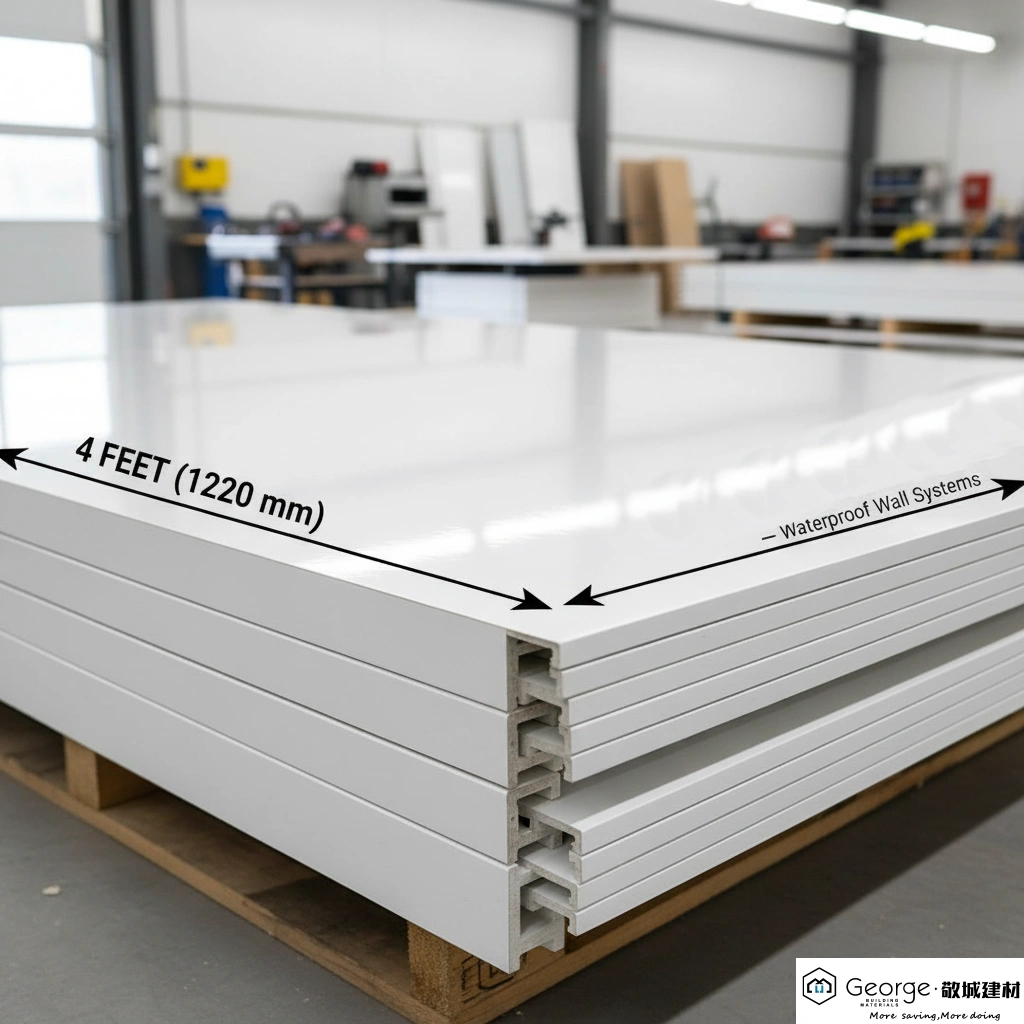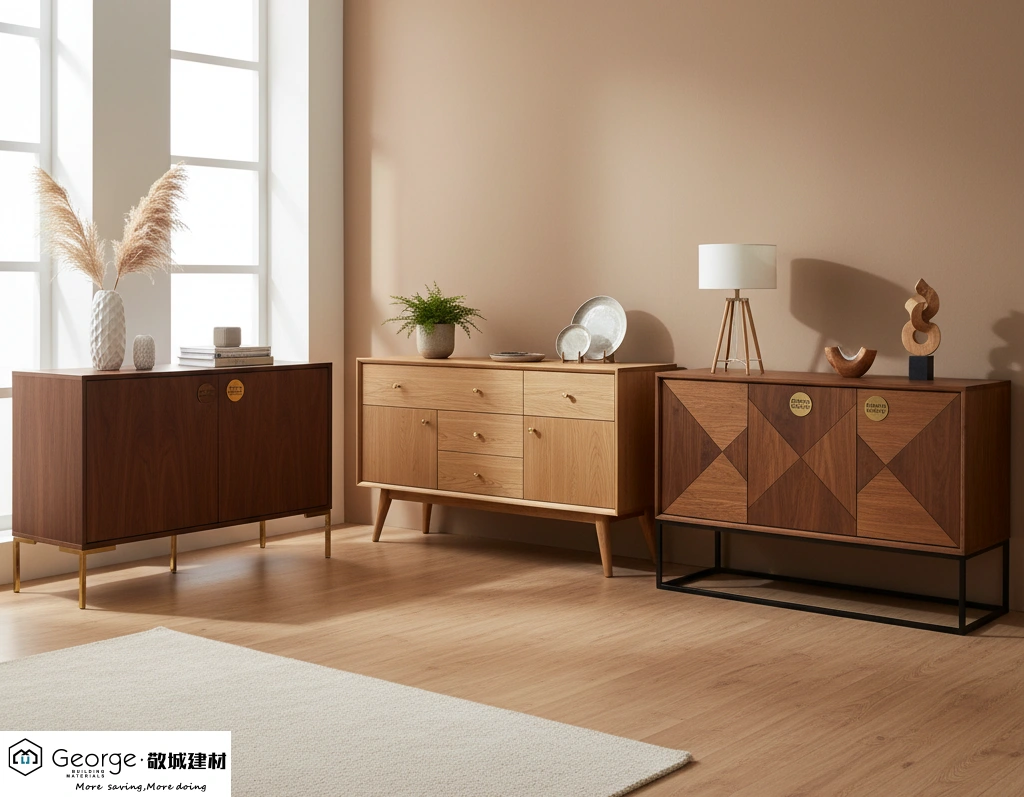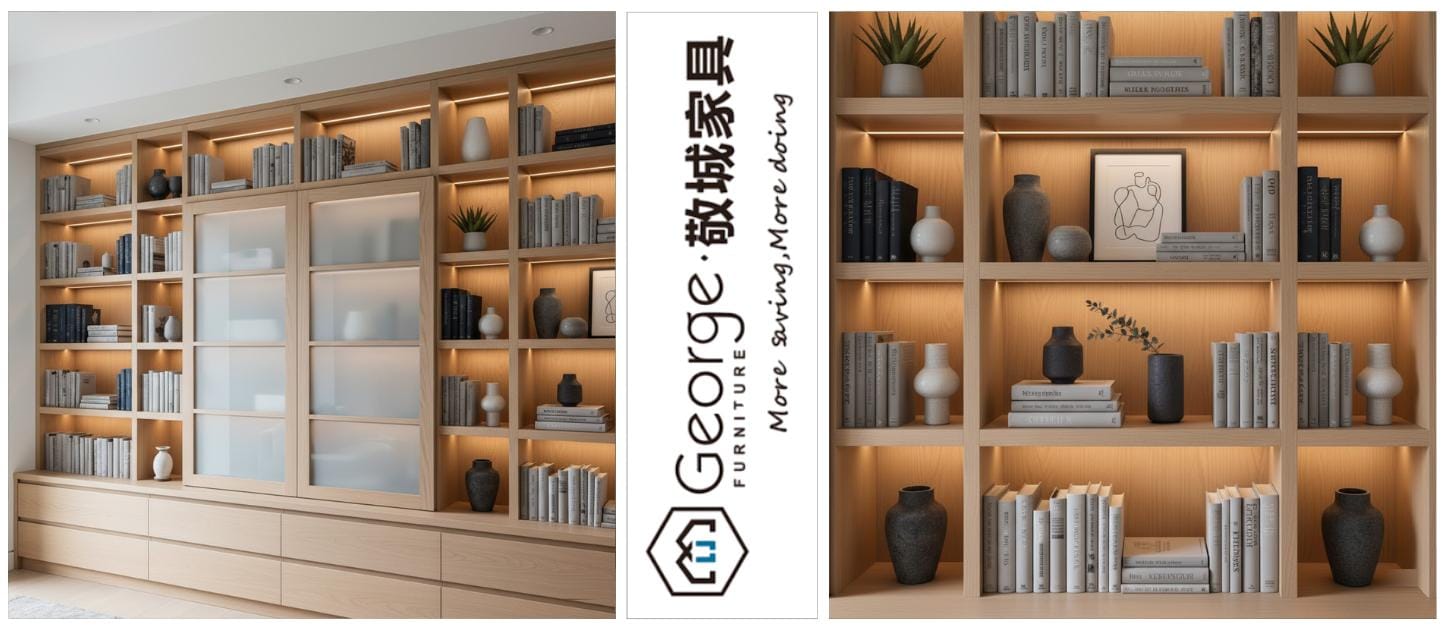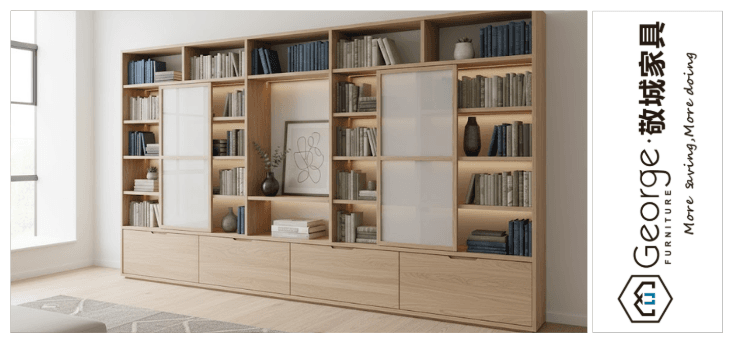Don’t forget the decisive detail when buying furniture: bookshelf depth. This measurement determines how functional and proportionate the shelf is. Too narrow, books protrude; too deep, it wastes space. This guide shows you the ideal depth, standard measurements, and space-saving options for paperbacks, large volumes, or décor.
Table of Contents
Part 1. Concept of Depth in a Bookshelf
Depth is one of the most critical design elements in the creation of a bookshelf, as it directly influences both the aesthetics and the functionality of the furniture. It is not simply about how much space a shelf occupies in the room, but a complex variable that determines what can be stored, how easy it is to access objects, and how the bookshelf integrates into the surrounding space.
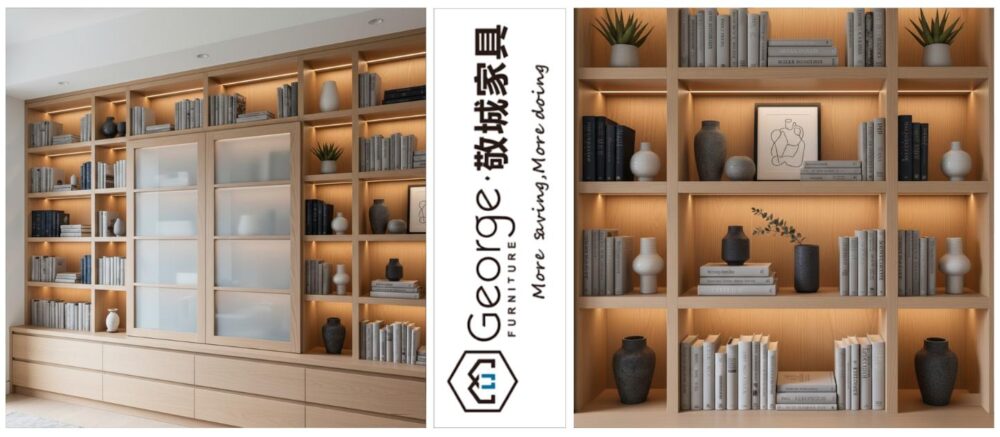
1.1 Definition and Measurement
The depth of a bookshelf is generally measured from the front edge of the shelf to the back surface, which can be the back panel or simply the wall. It is important to distinguish between total and external depth, which indicates the maximum measurement of the furniture from the front to the back, considering frames, protrusions, or handles, and useful or internal depth, which is the actual space available on the shelf where books or objects rest. This latter figure is the most relevant for the functionality of the bookshelf.
1.2 Aesthetics and Space
In addition to practicality, the average depth of the bookshelf significantly influences the appearance of the room. Shallow bookshelves tend to make the environment look larger and airier, reducing the visual impact of the furniture and being perfect for corridors, entrances, or restricted spaces. Conversely, deep bookshelves confer solidity and a sense of visual “weight”; if not designed correctly, they can make a room feel smaller and heavier. In large environments, however, they can become significant structural elements or function as room dividers, as in the case of freestanding bookshelves.
Part 2. Bookshelf Depth: Ideal Dimensions and Proportions
The standard depth of a residential bookshelf is defined by the average size of bound books and common volumes, as well as the need to maintain spatial ergonomics.
For most homes, the ideal shelf depth is between 10 and 12 inches (approximately 25–30 cm).
Ideal Depths by Intended Use
1) Residential Bookshelves (Living Room, Bedroom)
- 10 Inches (25 cm):Perfect for medium-sized books and paperbacks. It is an excellent choice for a reduced depth bookshelf that needs to appear slender.
- 12 Inches (30 cm):The most versatile measurement. It can accommodate almost all hardcovers, standard art books, and larger volumes, leaving enough space without unsightly protrusions.
2) Office or Archiving Bookshelves: 15–18 Inches (38–46 cm)
- Standard office folders and binders are often deeper than books. To ensure that archiving material does not protrude, it is essential to increase the shelf depth to a minimum of 15 inches. This is a key factor for the businesses and healthcare facilities we serve.
3) Low Bookshelf or TV Console: 15–20 Inches (38–50 cm)
- In these cases, the bookshelf also serves as a support unit for TV and electronic equipment (which require space for cables and ventilation). The depth must be adequate for the technology intended to be housed.
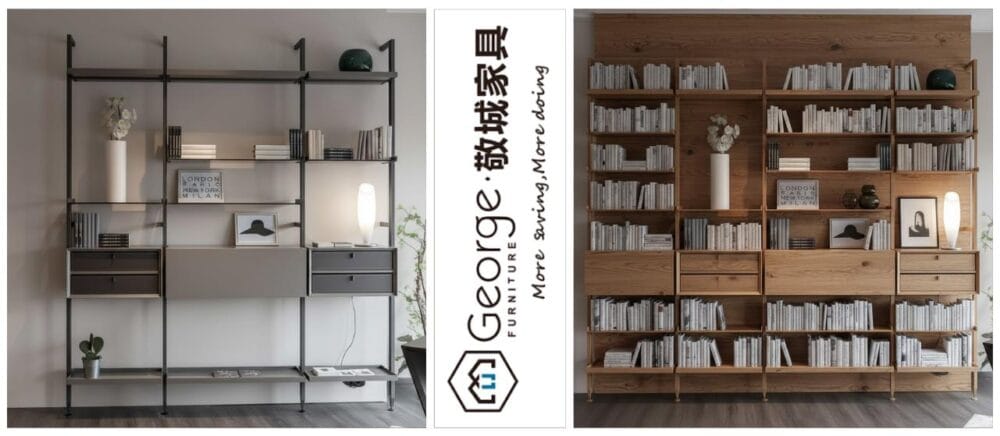
When evaluating the depth of the bookshelf in inches and cm, it is crucial to consider that a small variation of 2–3 inches can make a big difference in visual balance. In a small environment, a depth of 15 inches can be overwhelming, while 10 inches offers a more airy effect. At George’s Furniture, we ensure that proportions are always in harmony with the height and total size of the furniture.
Part 3. Depth and Height Between Shelves: A Functional Balance
The depth of the bookshelf cannot be chosen without considering the height of the shelves, as these two parameters act in synergy to determine both the ergonomics and the capacity of the furniture. Depth defines the available horizontal space—how much the furniture protrudes from the wall—while shelf height regulates the vertical distance between them, directly influencing how many books or objects can be housed on each shelf. Together, these two elements determine the balance between functionality and aesthetics of the bookshelf.
Relationship Between Depth and Height
To maintain a harmonious design, the depth of the bookshelf shelves should be proportionate, especially relative to the height. A shelf only 10 inches high but 15 inches deep may appear disproportionate if not filled with specific objects. The standard height between bookshelf shelves ideal for most books is 10–12 inches, leaving 1–2 inches above the book for grip.
Table: Ideal Depth and Height by Content Category
14–16 inches (35–40 cm)
Lower shelves or those with adjustable height for valuable editions.
| Category | Ideal Shelf Depth | Standard Height Between Shelves | Example of Use |
Paperbacks & Novels | 10 inches (25 cm) | 10 inches (25 cm) | Excellent choice for the best paperback bookshelf and maximizing space in corridors. |
Standard Hardcover Volumes | 12 inches (30 cm) | 12 inches (30 cm) | The most versatile combination for home and office. |
Binders/Documents | 15–18 inches (38–46 cm) | 13–15 inches (33–38 cm) | Bookshelves for offices, archives, or healthcare facilities. |
Contact Us for a Project Consultation
Why pay more? At George’s Furniture, we cut out the middlemen to bring you premium furniture, flooring, doors, windows, and more—all at prices up to 40% below retail. With 19+ years of experience and 600 consultants, we provide complete, custom project solutions, from initial design to final delivery.
The ability to offer adjustable shelves, a standard feature in George’s Furniture products, is fundamental for optimizing this relationship. It allows finding the perfect balance between the depth of the bookshelf and the need for vertical storage.
Part 4. Reduced Depth Bookshelves and Other Practical Aspects
The need for a reduced depth bookshelf (often 6–9 inches / 15–23 cm) emerges in environments where space is limited or where the furniture must not block light or passage space.
When to Choose a Reduced Depth:
- In corridors and entrances, where space is often limited, a bookshelf with a depth of about 8 inches proves ideal: it allows organizing paperbacks while enhancing the wall without creating clutter or interfering with passage.
- For nichesor under-stair spaces, it is essential to design custom solutions that exploit every available centimeter, with shelves calibrated based on the size of the objects to be stored.
- Similarly, for specific collections such as DVDs, comics, or paperbacks, a shelf depth between 6 and 8 inches guarantees maximum efficiency, optimizing space, maintaining order, and facilitating access to objects.
The Stability Factor
A fundamental aspect, especially for large bookshelves, is that a reduced depth can compromise the stability of the furniture. For this reason, all George’s Furniture bookshelves that exceed a certain height and have limited depth are designed to be firmly fastened to the wall, guaranteeing safety and visual balance. We also offer step-by-step support for installation, ensuring peace of mind and functionality.
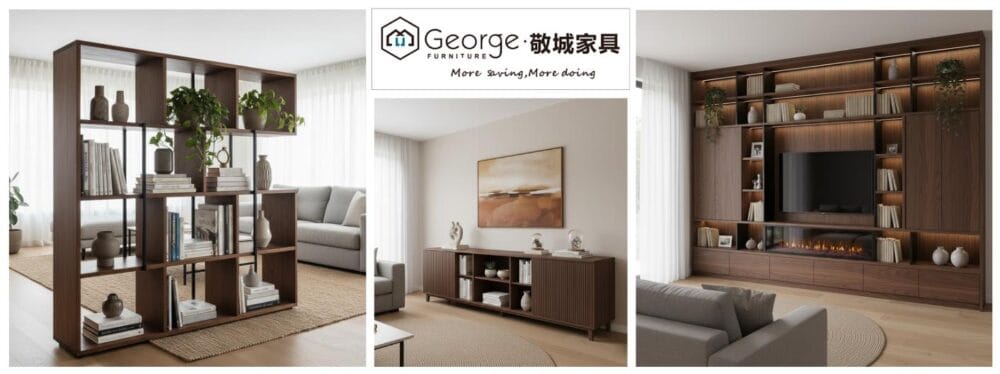
The possibility of customizing the depth of the bookshelf represents one of the main advantages of George’s Furniture. Whether you need a bookshelf 18 inches deep for an archive or 9 inches for a narrow art gallery, we offer tailor-made solutions, perfectly adaptable to your needs, with direct factory prices and no compromise on quality.
Part 5. How to Choose the Perfect Bookshelf for Your Space
Choosing the ideal bookshelf requires a joint evaluation of all dimensional parameters. The standard depth of the bookshelf is your starting point, but the final functionality will depend on how it integrates with the other measurements.
Practical Tips for Choice:
- Identify the deepest volume you intend to store (an art book, a binder, a decorative plate). Add 1 inch of tolerance, and you will have your minimum ideal shelf depth.
- In narrow rooms, opt for a bookshelf depth not exceeding 12 inches. If space allows, a greater depth (15–18 inches) creates a feeling of richness and solidity, ideal for Traditional or Industrial style bookshelves.
- A Wabi-Sabi or Modern style unit will prefer cleaner lines and, often, a more reduced depth. A Farmhouse or Traditional style can handle greater depths.
By choosing the custom design of George’s Furniture, you eliminate compromise. Our furniture, from the living area to the sleeping area, consists of complete solutions, built with the highest quality materials and innovative design. Receive your personalized furnishing solution with guaranteed delivery within 30 days, shipped to over 120 countries.
FAQ
Q1. What is the difference between the internal and external depth of a bookshelf?
External depth measures the total furniture, including protrusions, while internal depth indicates the actual space available on the shelves.
Q2. How do I choose the bookshelf depth based on the volumes to be stored?
Measure the deepest book or object and add about 0.8–1.2 inches (2–3 cm) of tolerance for ease of use.
Q3. Are deep bookshelves always better than shallow ones?
No, excessive depth can occupy unnecessary space and reduce accessibility; the choice depends on books, objects, and room size.
Contact Us for a Project Consultation
Why pay more? At George’s Furniture, we cut out the middlemen to bring you premium furniture, flooring, doors, windows, and more—all at prices up to 40% below retail. With 19+ years of experience and 600 consultants, we provide complete, custom project solutions, from initial design to final delivery.
Conclusion
The depth of the bookshelf balances the space for your books and objects with the space available in the room. Whether you choose 12 inches or a compact 8-inch model, the important thing is to find the right balance between object dimensions and room proportions. At George’s Furniture, we transform these technical details into practical and beautiful design solutions. With our furniture, you will have a bookshelf with the perfect depth, custom-designed for you, without stress.

